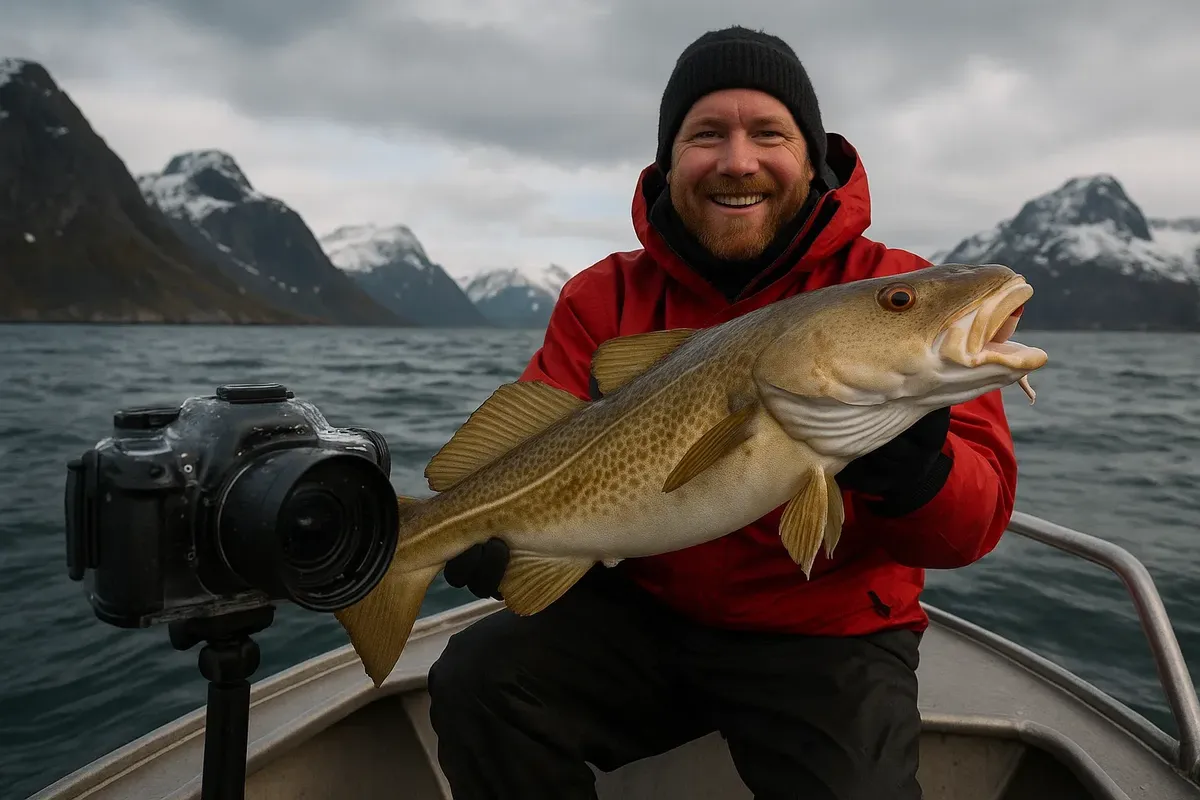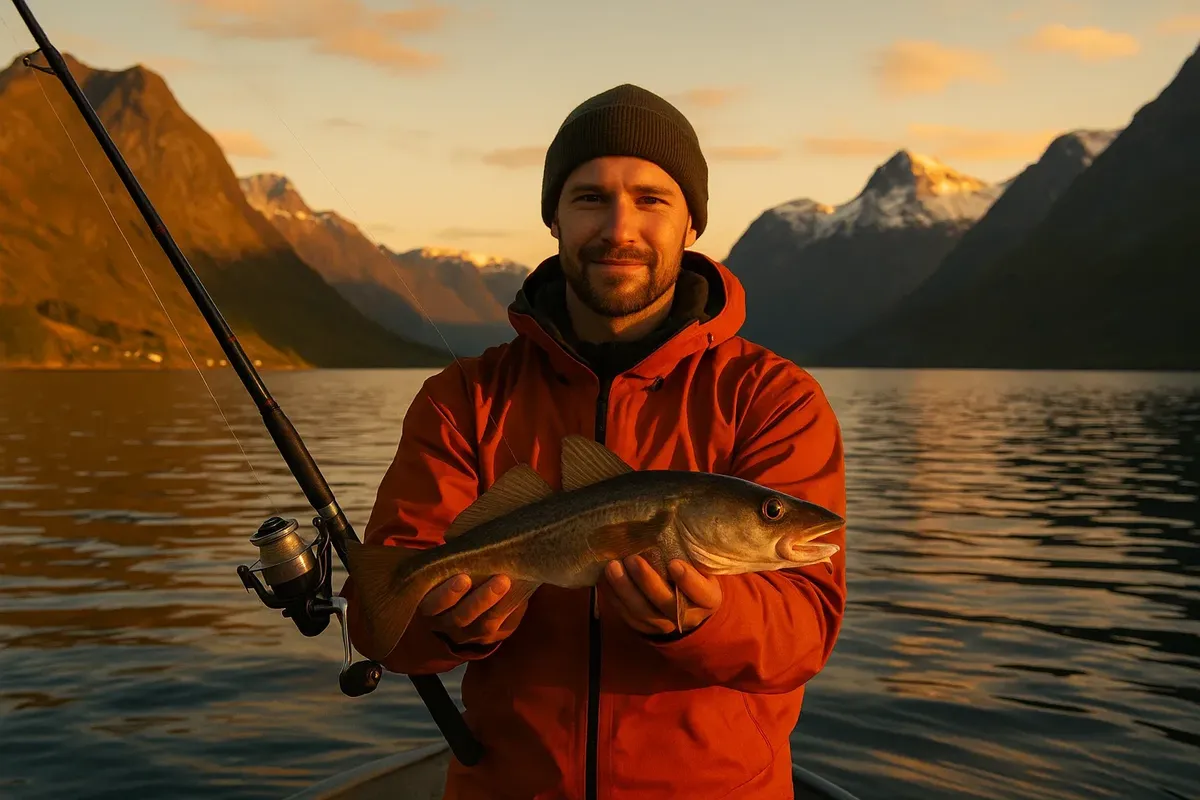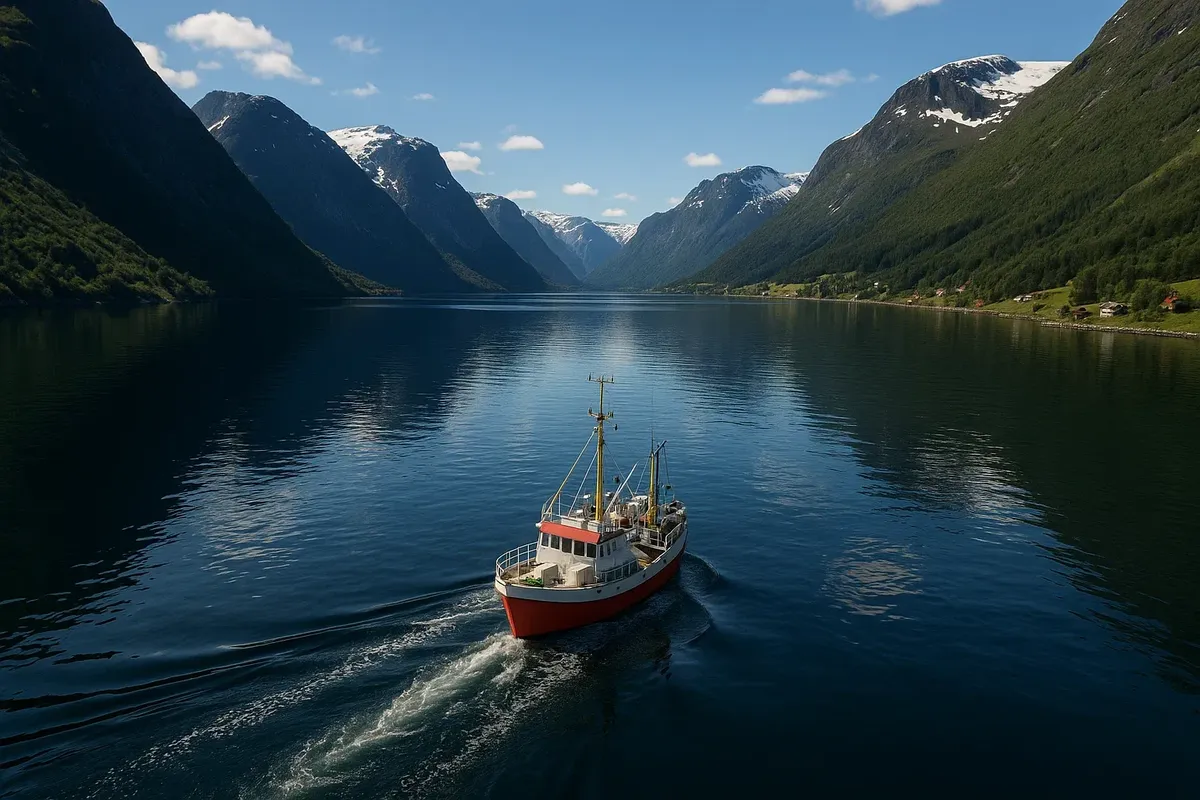📸 Splash-free photos: shooting catches and landscapes while fishing in Norway
Sea fishing in Norway is not only about catching lots of fish, but also an opportunity to see beautiful fjords, giant whales and impressive prizes. Here's how to get great photos without ruining your equipment with sea spray and preserving all the moments of your trip.

🌊 Keep your equipment dry and clean by protecting it from splashes and moisture.
The sea and salt water are the main things that can damage your photographic equipment.
How to protect your camera:
- Use waterproof cases or special silicone covers.
- Sealed cases with a clear plastic layer are perfect for smartphones and action cameras.
- Always carry a dry microfibre cloth and small zip-lock bags with you, in case it rains or you get splashes.
Tip:
If you're using a DSLR or mirrorless camera, protect the lens with a UV filter or protective glass that can be easily wiped clean of drops.
⏱️ The camera settings should make it easy to take clear shots, even when the camera is moving.
If you want to take good photos of the sea, you need to use the right settings on your camera.
- To take a photo of a boat, fish or whale moving clearly, use a fast shutter speed (1/500 to 1/2000 second).
- Set the ISO to 100-400 during the day. If it's cloudy or evening, you can increase the ISO to 800–1600.
- Aperture: The best aperture setting for taking pictures of landscapes and fishing is between f/5.6 and f/11.
- Focus: Set the camera to continuous autofocus (Continuous AF, AI Servo) to keep up with the movement of the subject.

☀️ The best times to go are in the morning and evening.
It is especially important to have good lighting when taking beautiful photos at sea.
Morning light (sunrise until 9–10 a.m.):
It is perfect for taking photos of landscapes and people looking fresh and beautiful in the morning light.
This is the light that is just one hour before sunset.
The golden hour is the best time for taking photos with bright colours and shadows.
Tip:
Try not to take photos at midday as the shadows and sunlight can make the fish look unnatural and too bright.
🚁 Taking photos and videos from above with a drone can create unique images.
Using a drone lets you get great shots from unusual angles.
Here is what you need to know:
Make sure you follow the rules for using drones in Norway:
Do not fly in national parks or nature reserves, or near airports.
The minimum distance from people and animals is 50 metres.
Make sure you check the maps of the restricted areas before you go (e.g. Avinor Drone Guide).
Here are some tips for shooting with a drone:
Try to take the photos in the morning or evening, when the light is best.
Use Panorama and Cinematic modes for smooth video clips.
Try not to fly the drone in strong winds (above 8–10 m/s).

Here are some tips for taking photos of your catch:
A great photo of your catch is an important part of the fishing experience.
- Hold the fish either horizontally or vertically with both hands to make it look bigger and more natural.
- Try to take the photo of the fish straight away, when it looks its best.
- If you are taking a photo against the light, use a flash or reflector to remove shadows on people's faces or fish.
- Take several shots from different angles and distances to give you more options for choosing the best one.
🐋 Photographing animals and whales from a boat:
- Lenses with a focal length of 200–400 mm are best for photographing whales, birds and dolphins.
- Use continuous shooting so you don't miss the moment when a whale jumps out of the water or a dolphin performs a trick.
- Keep your camera on and ready to use at all times — animals appear suddenly and disappear quickly.
🎯 Checklist for taking great photos of fishing:
- Make sure you use a waterproof case and a protective filter.
- Set the camera to take photos really quickly (1/500 sec or less).
- Try to take your photos during the golden hour, which is just after sunrise and before sunset.
- Keep your distance and follow the rules when using a drone.
- Make sure you have spare batteries and memory cards ready.
- Take a small tripod or monopod with you to make sure your photos are steady.
📋 What you need for the perfect photo shoot at sea:
- Protect your camera with a waterproof case or bag.
- Microfibre cloths and products for cleaning lenses
- Have some spare batteries and memory cards ready.
- UV filter for your lens.
- Please bring a tripod or monopod that is easy to carry.
- Drone (with flight permits checked)
- This phone case will keep water out.
- A polarising filter can help you to get beautiful, deep water colours.
🔥 5 easy ways to make your photos even better:
- Use reflections:
Take photos of fish and people so that their reflections in the water go all the way across the picture.
- Come up with a story:
Take pictures of not only the catch, but also of the fishing process itself — this will make your photos more emotional.
- Take note of the details:
The boat, fishing gear, hands holding the fish, and small pieces of equipment always add to the atmosphere.
- Include people in your photos:
This will make it more realistic and show the emotion of the moment.
- Try different angles:
Take photos from above, below or at the same level as the water. This will make your photos interesting and original.
If you want to take good photos of your fishing trip in Norway, just follow these simple tips. Your equipment will be protected, and you'll have memories to last a lifetime!





2 comments
Log in to leave a comment